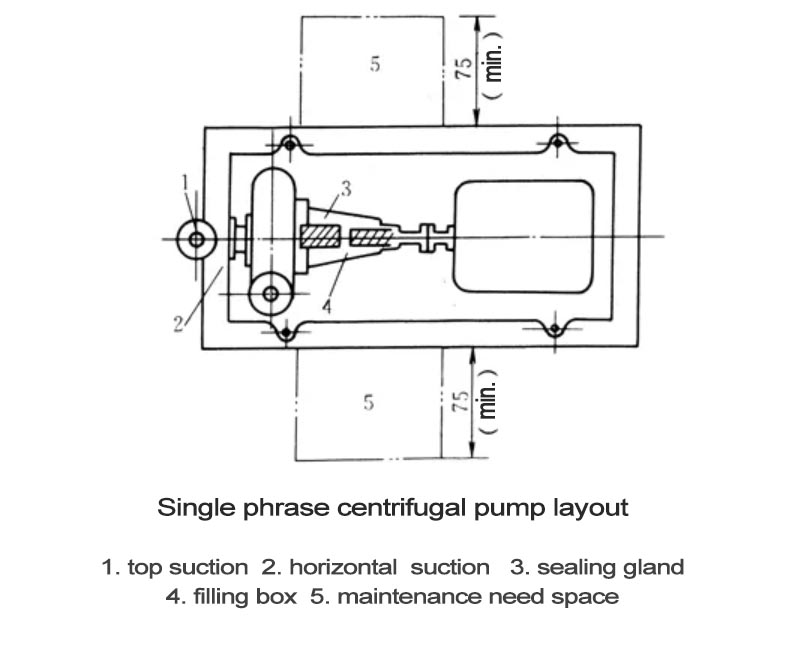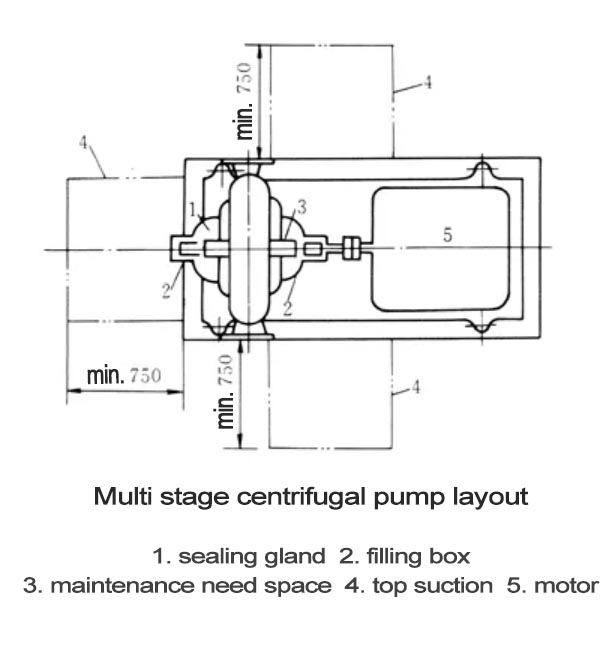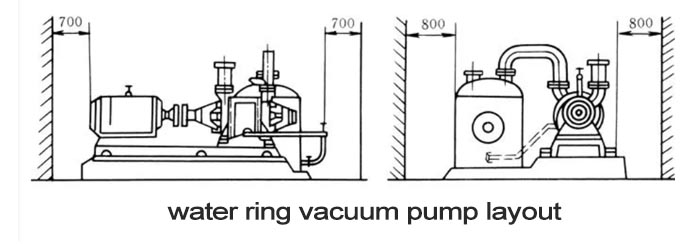How to Install a Centrifugal Pump?
Pump installation layout types
1. Open air arrangement
Generally, the pump is centrally arranged under or on the side of the pipe gallery, or near the pumping equipment. The main advantages are good ventilation, convenient operation and stack repair. If the pump is arranged below the pipe gallery, the center line of the pump outlet should be aligned, 0.6m away from the center line of the pipe gallery column.
2. Semi-open air arrangement
Semi-open layout is suitable for rainy areas, the pump is generally be set under the pipe gallery. Or the pump is arranged on the lower floor of the frame, with the frame platform as the ceiling. According to the pump layout requirements, the pump layout into a single row, double row or more rows.
3. Indoor arrangement
The indoor pump is suitable for cold or windy and sandy areas, and other has special requirements area.
Requirements for pump layout
1. For pumps in open or semi-open spaces, the axis of the pump and prime mover is generally perpendicular to the axis of the pipe.
2. For indoorly arranged pumps, when the temperature of the delivered liquid is higher than the self-ignition point or the liquid being transported is liquid hydrocarbon, it should be placed in the respective room separately with other pumps and separated by a firewall.
The clearance between the pump end or the pump side and the wall should not be less than 1.2~1.5m, and the clearance between the two rows of pumps should not be less than 2m.
3. The positioning dimensions on the equipment layout are based on the axis of the pump unit and the centerline of the outlet flange. The elevation of the equipment is indicated by the elevation of the lower surface of the pump base (ie the top surface of the pump base).
Note: The engineering system of each engineering company calculates NPSHa based on the top surface of the pump foundation, not the inlet centerline of the pump. The pump plant’s NPSHr is based on the pump’s inlet centerline, which is the center of the pump.
4. The pump groups should be neatly arranged and recommended to be taken with the pump’s exit centerline.
5. The electrical professional and the process or layout professional should be coordinated in time. When possible, the motor part of the pump should be as far as possible in the explosion-proof area to save investment.
6. The pump should be as close as possible to the liquid supply equipment to prevent the NPSHa from being small.
7. The position of the extraction piston and tie rod should be left on the power side and pump side of the steam reciprocating pump.
8. When the vertical pump is placed under the pipe gallery or below the frame, the space required for the installation and maintenance of the pump body should be left above it.

Single phrase centrifugal pump

Single phrase double suction centrifugal pump

Multi phrase centrifugal pump

Water ring vacuum pump
